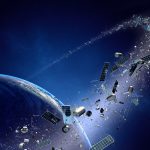Though the barren Antarctic icecaps may seem like an unusual place for cutting-edge physics, scientists have gathered at the South Pole to search for elusive evidence that has the potential to bring quantum mechanics and gravity, two fundamental tenets of our knowledge of the world, together.
Quantum Gravity: A Search
Einstein’s general relativity, which explains gravity on a cosmic scale, and quantum physics, which rules the world of the very tiny, would be reconciled by a theory of quantum gravity. Researchers think that cosmic neutrinos, which are high-energy particles from space, may include remnants of the effects of quantum gravity. But finding them requires a clean environment with little disturbance.
South Pole: Why is it here?
The South Pole provides unmatched circumstances for this search:
- Pristine Environment: The large, icy area has no radio interference or background noise, which might conceal the weak signals that the researchers are looking for.
- Ice as a Detector: The dense, clear ice serves as a massive organic detector. Sensitive equipment can see the light flashes produced when cosmic neutrinos come into contact with ice molecules.
- Earth as a Filter: Because of the South Pole’s special position, scientists may utilize Earth to filter out most cosmic particles, leaving just the highly sought-after neutrinos.
IceCube Observatory for Neutrinos
IceCube, a gigantic particle detector buried deep under the ice, is at the forefront of this hunt. It is made up of thousands of sensors arranged in a cubic kilometer of ice, ready to detect the telltale flashes that cosmic neutrinos emit.
Exceeding the Conventional Model
It would be revolutionary to detect neutrinos altered by the effects of quantum gravity. A finding of this kind may provide hints about novel physics, which might shed light on the origins of the universe and the nature of space-time itself.
Difficulties and Cooperation
The project is internationally collaborative and technically demanding. Maintaining and upgrading the sensitive IceCube detector array is a full-time job for scientists and engineers working in one of the toughest places on Earth.
Physics’ Future
Though it is very early in the process, the hunt for evidence of quantum gravity at the South Pole is part of a larger effort to expand our knowledge of the universe. The mission may cause a paradigm shift in how we understand time, space, and the underlying forces that control the cosmos.








